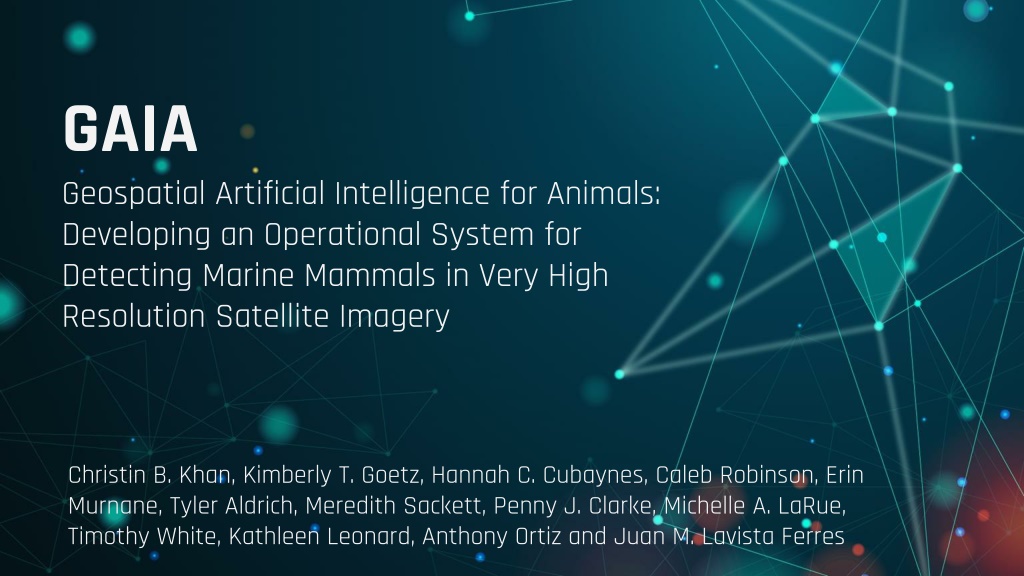Revolutionizing Marine Mammal Detection using Geospatial Artificial Intelligence
Delve into the groundbreaking development of an operational system utilizing geospatial artificial intelligence to detect marine mammals in very high-resolution satellite imagery. Explore the global interest, monitoring platforms, proof of concept, limitations, future possibilities, and innovative annotation methods discussed in the study.
Download Presentation

Please find below an Image/Link to download the presentation.
The content on the website is provided AS IS for your information and personal use only. It may not be sold, licensed, or shared on other websites without obtaining consent from the author. Download presentation by click this link. If you encounter any issues during the download, it is possible that the publisher has removed the file from their server.
E N D
Presentation Transcript
GAIA Geospatial Artificial Intelligence for Animals: Developing an Operational System for Detecting Marine Mammals in Very High Resolution Satellite Imagery Christin B. Khan, Kimberly T. Goetz, Hannah C. Cubaynes, Caleb Robinson, Erin Murnane, Tyler Aldrich, Meredith Sackett, Penny J. Clarke, Michelle A. LaRue, Timothy White, Kathleen Leonard, Anthony Ortiz and Juan M. Lavista Ferres
GLOBAL INTEREST IN MARINE ANIMALS Government agencies, academic research, commercial institutions, general public
MONITORING PLATFORMS VISUAL ACOUSTIC TAGGING Vessels, Aircraft, UxS Buoys, Gliders, Towed Arrays Satellite-monitored tags
LIMITATIONS FEW IMAGES IDEAL CONDITIONS WHALE HOTSPOTS Only a single image or a handful of images Clear skies, sunny day, and low wind conditions Areas of known aggregations of species of interest
THE TIME HAS COME SATELLITES CLOUD AI Resolution is detailed enough for species identification Potential for rapid image processing without downloading Incredible advances in machine learning
GAIA Geospatial Artificial Intelligence for Animals
ANNOTATION MANUAL STREAMLINED CROWDSOURCED Dr. Hannah Cubaynes ArcMap and ArcPro Protocols Microsoft AI for Good Human in the Loop tool MAXAR S GeoHIVE Crowdsourcing Platform
INTERESTING POINTS Window statistics Rolling statistics Generative modeling
TRADE OFFS 59 whales / 50,325 interesting points 58 whales / 26,392 56 whales / 4,557
PROCESSING TIME MANUAL STREAMLINED 3.5 hrs/100 sq km 10 sec/image (Cubaynes et al 2019) Microsoft AI for Good Human in the Loop tool
CHALLENGES IMAGE ACCESS WEATHER LICENSING Cost, Priority, Spatial and Geographic limitations, tasking & downloading High sea state and clouds may impact the utility of this platform Inability to share data makes it challenging to build up annotation dataset























